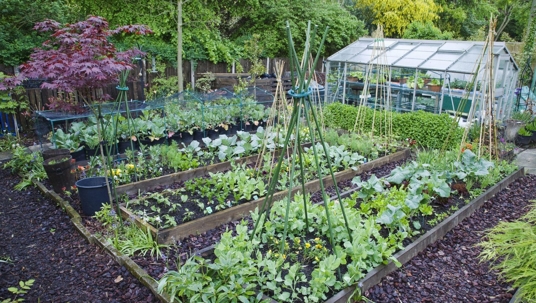What to Grow You may already have a productive cool season garden and just need to decide which warm season crops you’ll grow and where. It’s helpful to record the varieties you grew and include any notes you want to remember the following season. It’s also important to rotate crops from year to year to increase soil fertility and break the life cycle of disease organisms and pests. Our handouts “Planting Guide for North Florida Vegetables” and “Planting Guide for North Florida Culinary Herbs” can help you decide on your crops. Use the Plant Family column so you can avoid successively planting vegetables from the same family. Vegetables you can start in spring include bush, pole and lima beans, cantaloupe, corn, cucumber, eggplant, endive, lettuce, okra, peas, peppers, Irish and sweet potatoes, summer and winter squash, tomatoes and watermelon. Use the guides for specific planting times. Some crops will be able to go further into summer than others before succumbing to the heat, and only a handful like pumpkin, Malabar spinach, okra, sweet potatoes, hot peppers and southern peas, will be able to grow in the hottest part of summer. Warm season herbs include basil, bay laurel, Cuban oregano, culantro, lavender, lemon balm, lemon grass, lemon verbena, Mexican tarragon, mint, purslane, roselle, rosemary and stevia. Others can also be started in spring for a shorter growing season. Grow what your family likes to eat and if it’s your first time, don’t try too much at once. You can also plant small amounts in 2 week intervals to keep a manageable amount coming.
Where to Grow If you don’t already have a garden location, choose the sunniest site on your property. Account for any deciduous trees that may block light once they leaf out. Easy access to the kitchen is a plus. If the land has some slope and you garden in rows, align the rows perpendicular to the slope to decrease runoff. Otherwise align them east to west for best sun exposure. Also keep in mind that taller plants like okra, or trellised plants should be located where they won’t block the sun from shorter plants. Some crops can get by with a little less sun than others so if you have some shadier spots in your garden, refer again to our vegetable and herb planting guides to see the approximate sun needs for various plants.
How to Grow Probably the most productive and attractive way to grow a garden, especially in our area where soils lack nutrients and good texture, is to create raised beds. There are many advantages to a raised bed, and one of the biggest is that it doesn’t involve tilling. Tilling has become less popular in the home garden – it contributes to top soil loss, can increase weeds by bringing seeds up where they will germinate, and destroys the structure of the soil and the beneficial organisms living there. Many sites describe how to build a raised bed and our sister site Locally Laid can build custom beds for you.. They can be built any size but limiting them to 4’ wide allows you to reach from both sides without walking into the bed. Raised planters complement square foot gardening, first proposed by Mel Bartholomew, which has become a popular and efficient way to garden.
Create your Bed Once you’ve located your garden, if you’ve built raised beds, it’s time to create your soil mix. A 1-1-1 mix (by volume) of compost, peat moss and vermiculite makes the perfect soil. If you don’t have your own garden compost, then combine different kinds of store compost to ensure you’re putting a variety of nutrients into the mix. Once the planters are filled, mark off 1’ by 1’ squares with a sturdy grid. One-inch-wide strips of wood lath work well for this and give you a constant point of reference for spacing your plants correctly. Refer to our “Planting Guide for North Florida Vegetables” for suggested number of plants per square foot, for both transplants and seeds.
Plant your Garden Before planting, spray the soil to moisten it thoroughly. Seed packets will list the sowing depth, but generally seeds are planted at a depth about equal to their size or a little deeper. Position trellises as you plant transplants (see our article on How to Make Trellises). Lightly water your new plants or seeds in and keep moist. With the right soil mix in the garden, fertilizer is less necessary, as nutrients are added when additional compost is refreshed at the end of the season. Keep your beds tidy and watered. A serpentine soaker hose run through the bed beneath the soil surface is an efficient, water-wise practice. Hand watering can supplement the irrigation regulated by the SJRWMD. Check on your garden daily and harvest often.
References
Bartholomew, M., 2013, All New Square Foot Gardening, 2nd edition, Cool Springs Press, Minneapolis, MN, 272 pp.
DelValle, T.B., Gardening in Raised Beds, ENH1211/EP472, Gainesville: University of Florida Institute of Food and Agricultural Sciences, July 2016. http://edis.ifas.ufl.edu/ep472

